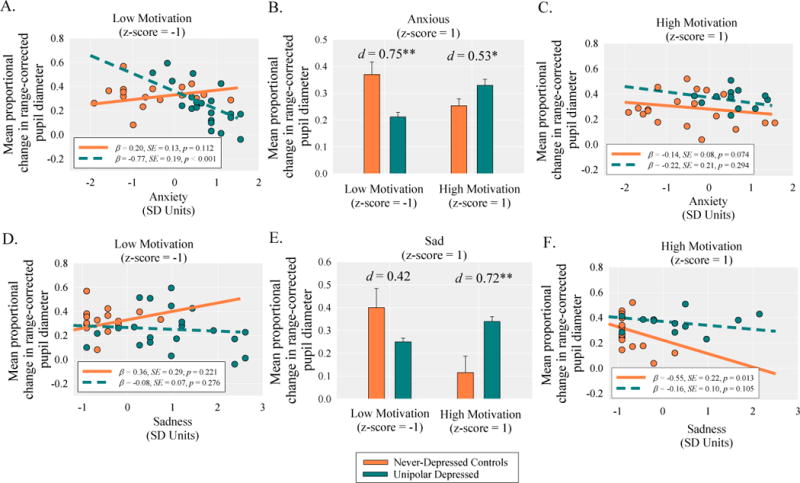Fig. 5.

The top and bottom panels shows the decomposition of the significant motivation-by-emotion-by-clinical status interactions on pupil dilation. The panels show (A) the simple slopes for the effect of anxiety on pupil dilation as a function of clinical status (never-depressed controls vs. unipolar depressed) at low levels of motivation; (B) the differences in pupil dilation at high levels of anxiety as a function of clinical status and motivation; (C) the simple slopes for the effect of anxiety on pupil dilation as a function of clinical status at high levels of motivation; (D) the simple slopes for the effect of sadness on pupil dilation as a function of clinical status at low levels of motivation; (E) the differences in pupil dilation at high levels of sadness as a function of clinical status and motivation; (F) the simple slopes for the effect of sadness on pupil dilation as a function of clinical status at high levels of motivation.
